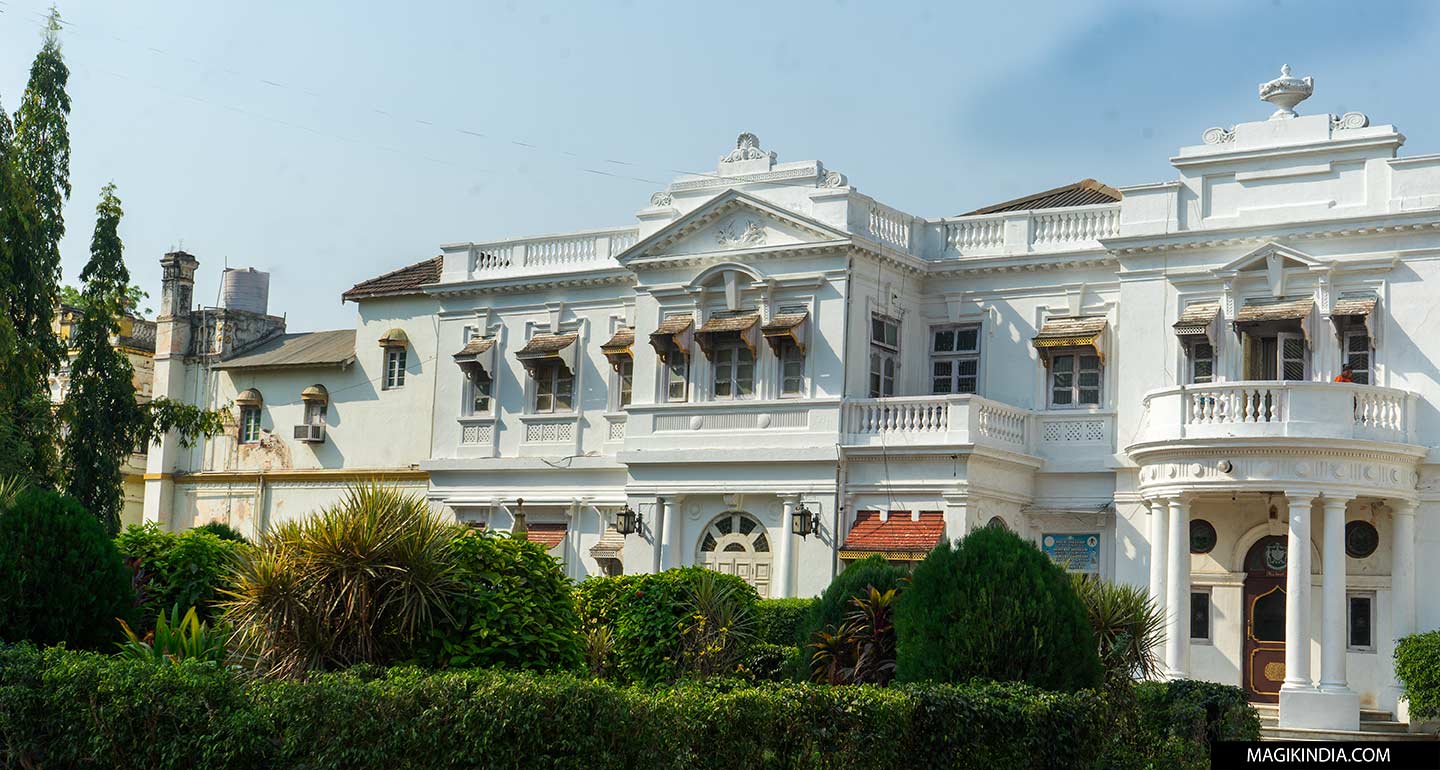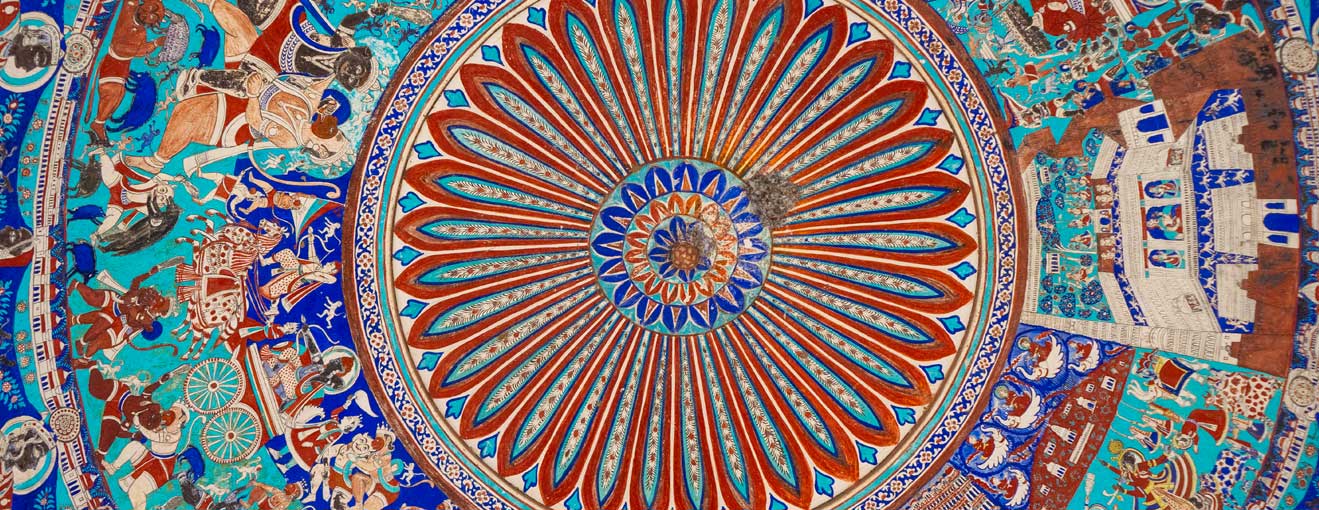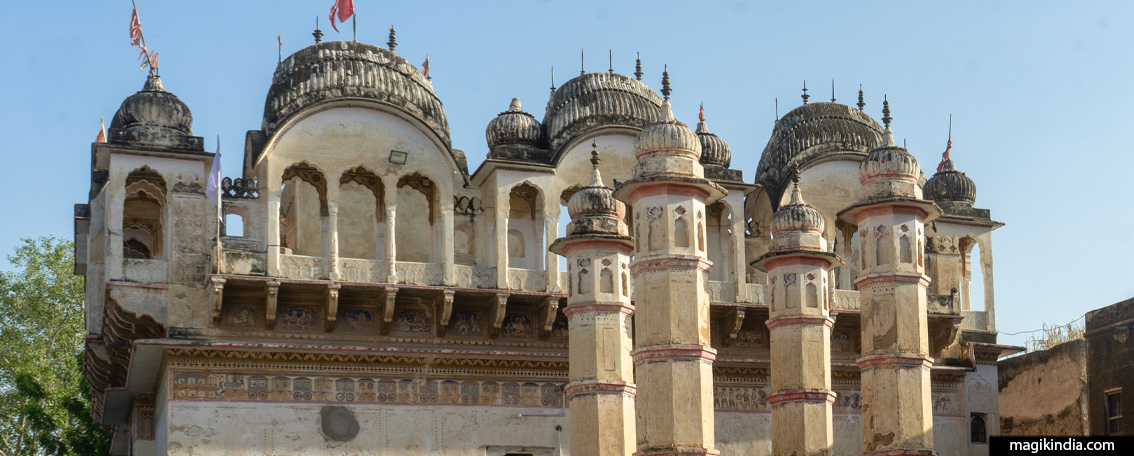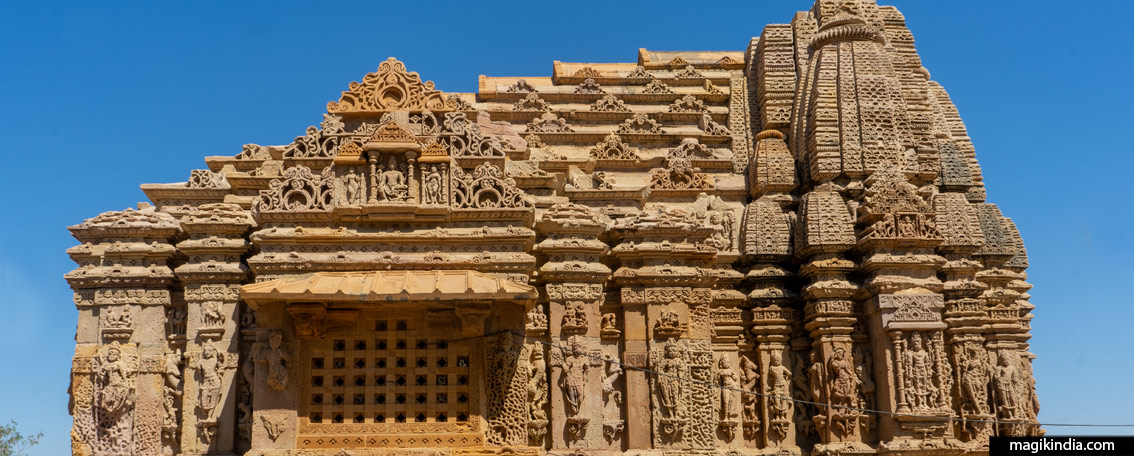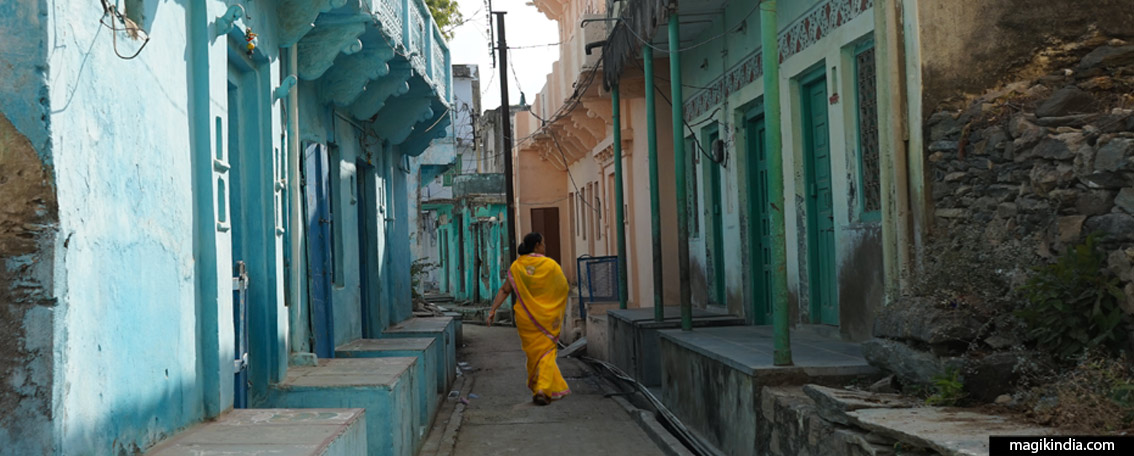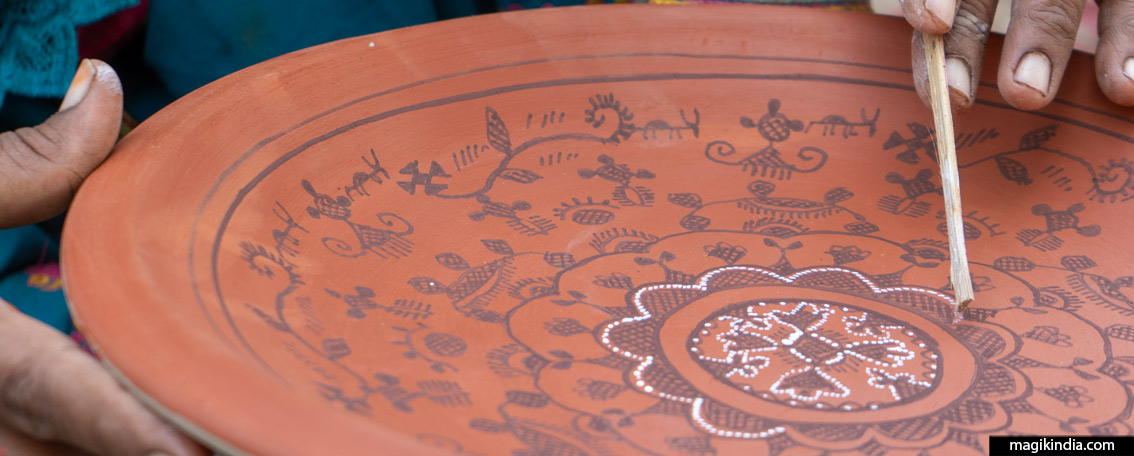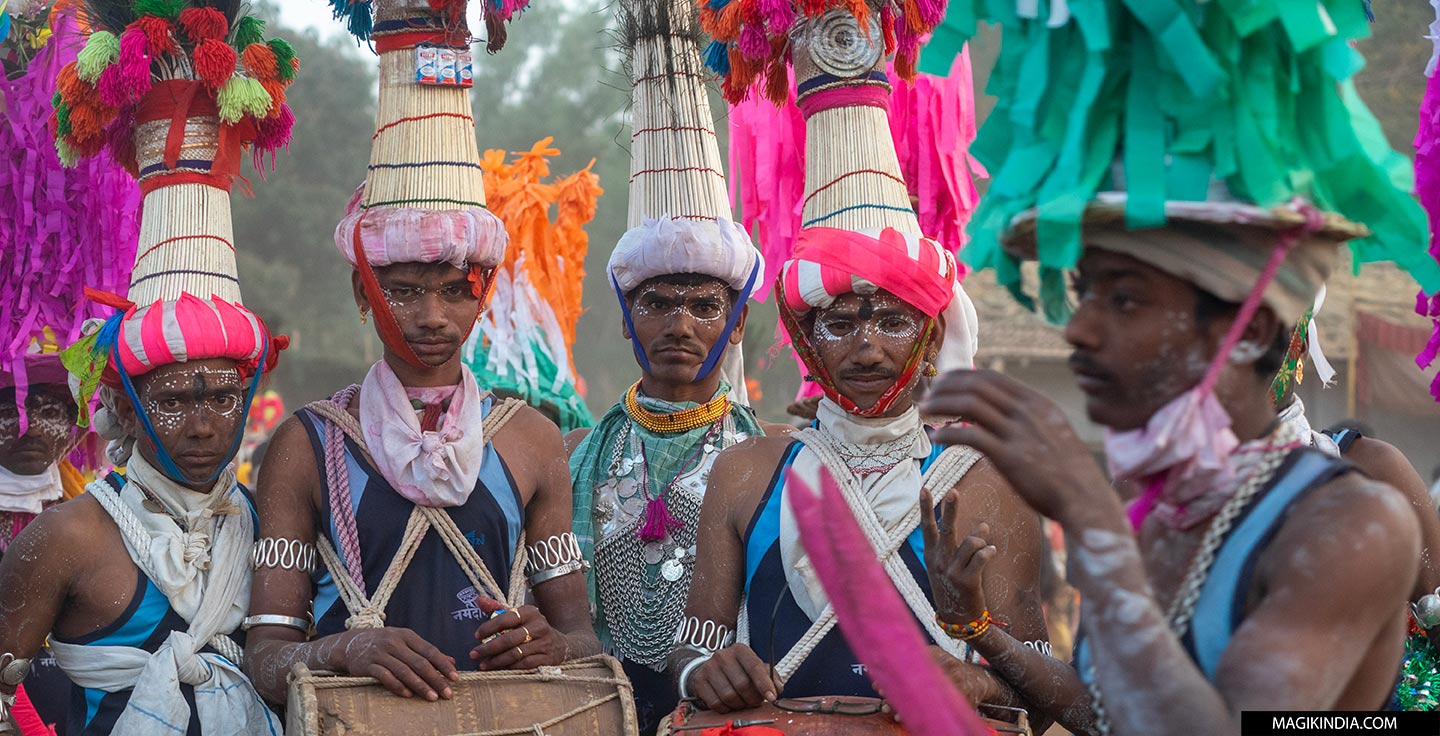
Holi in the Satpuda Hills
Just one month ago, I was staying with the people of the Satpuda Mountains (Maharashtra) for the Holi celebrations and the enchantment has still not faded! The Adivasis, the indigenous people of India, have a different way of celebrating Holi: here, there is no flood of coloured powders, the celebration is expressed through ecstatic dances to the rhythm around a sacred bonfire. The colors are somehow transposed onto the extravagant costumes worn by the gheriyas (dancers) composed of impressive headdresses and belts made of gourds.
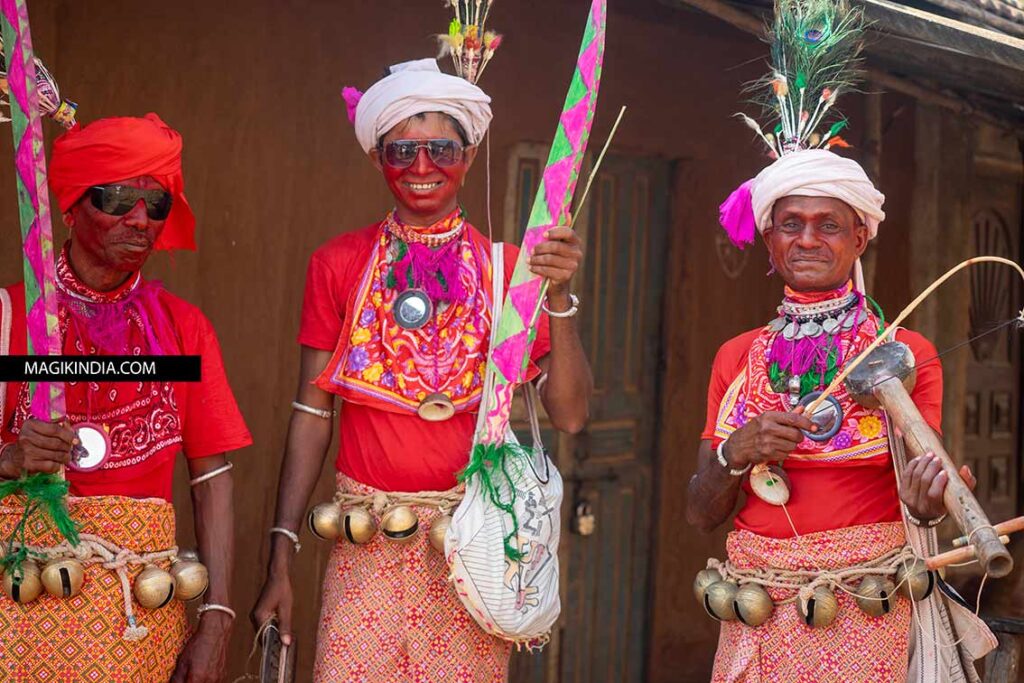
From the very beginning of my journey, the signs were already promising. On the road between Rajpipla and Satpuda, in a remote village, I had the chance to witness the dances and songs of the Vasava gheriyas (dancers), whose dress code is red. The rest of my travels would be exceptional.
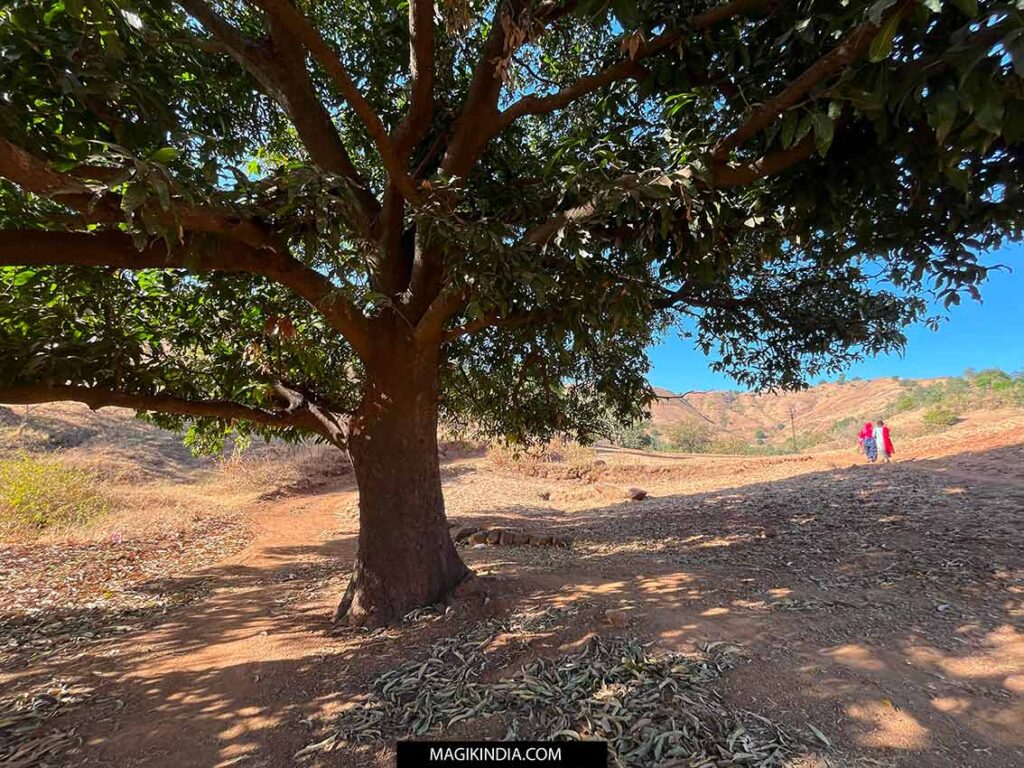
To reach the venue of the festivities, we have to cross the undulating landscapes of the Satpuda mountain range, which rises in eastern Gujarat, crosses the border between Maharashtra and Madhya Pradesh and ends in Chhattisgarh.
To my great surprise, I discovered a truly mountainous region, composed of steep cliffs and winding roads. Our car reached the top of these mountains after two hours.
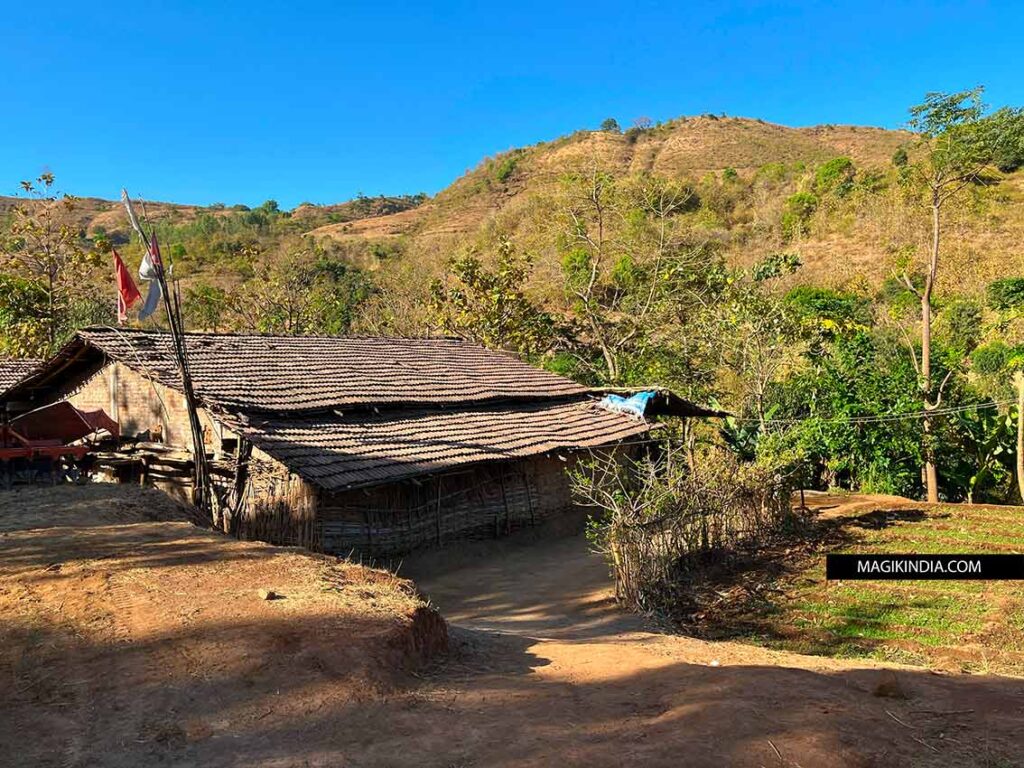
Our destination is bucolic, dotted with small hamlets inhabited by the indigenous Bhils and Vasavas. There aren’t any hotels in sight. It’s a region that’s still unspoiled, and I’m glad about that. It’s becoming increasingly rare to find an authentic corner in India.
I suddenly feel like an adventurer in an unknown land. I thank my lucky stars that I was able to find a friend at the last minute who knows the area, otherwise the adventure could have been cut short.
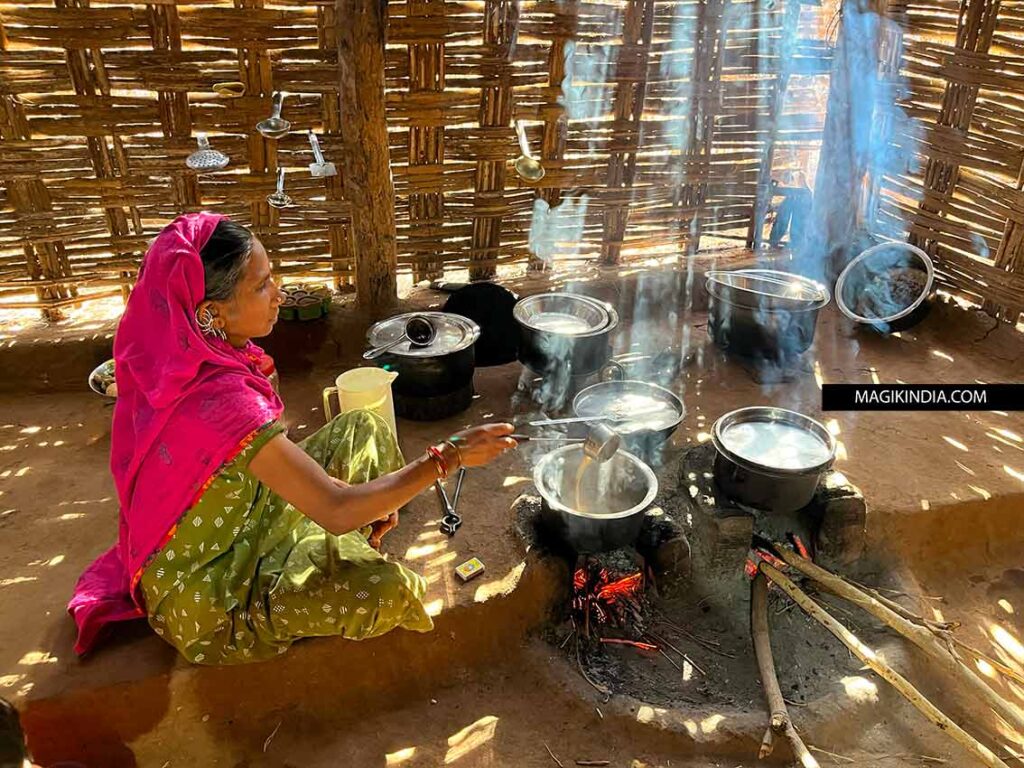
It was he who found us a homestay: a traditional bamboo, brick, and adobe house inhabited by a charming Vasava family. For three days, I immersed myself in the lives of my hosts, but that’s another story to be told later on.
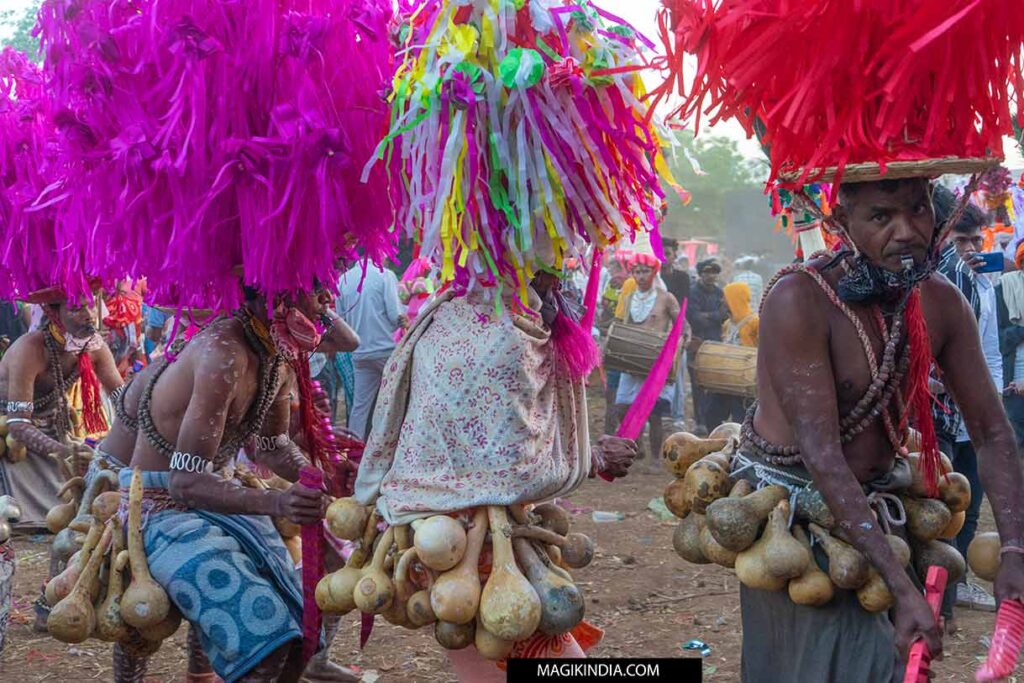
In this region, Holi festivities take place only during the night and last until sunrise. Adivasis from different parts of the Satpuda Hills, as well as from the border states of Gujarat and Madhya Pradesh, gather to celebrate the spring festival with great pomp.
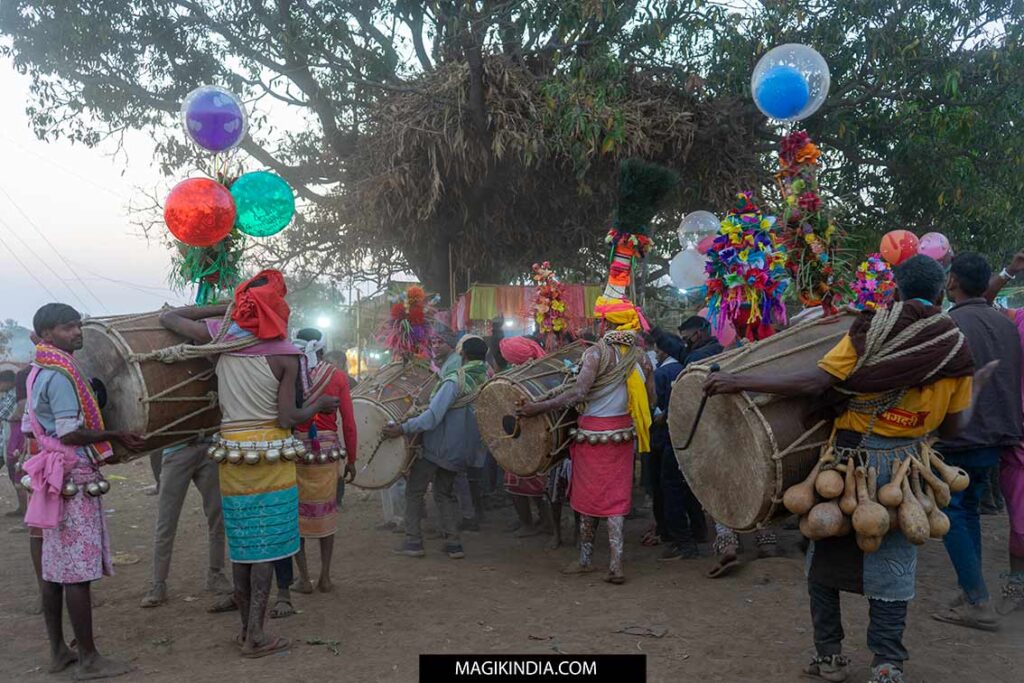
The men arrive in small groups and perform circle dances, punctuated by whistles, foghorns and percussion instruments, not forgetting the astonishing belts of bells and gourds.
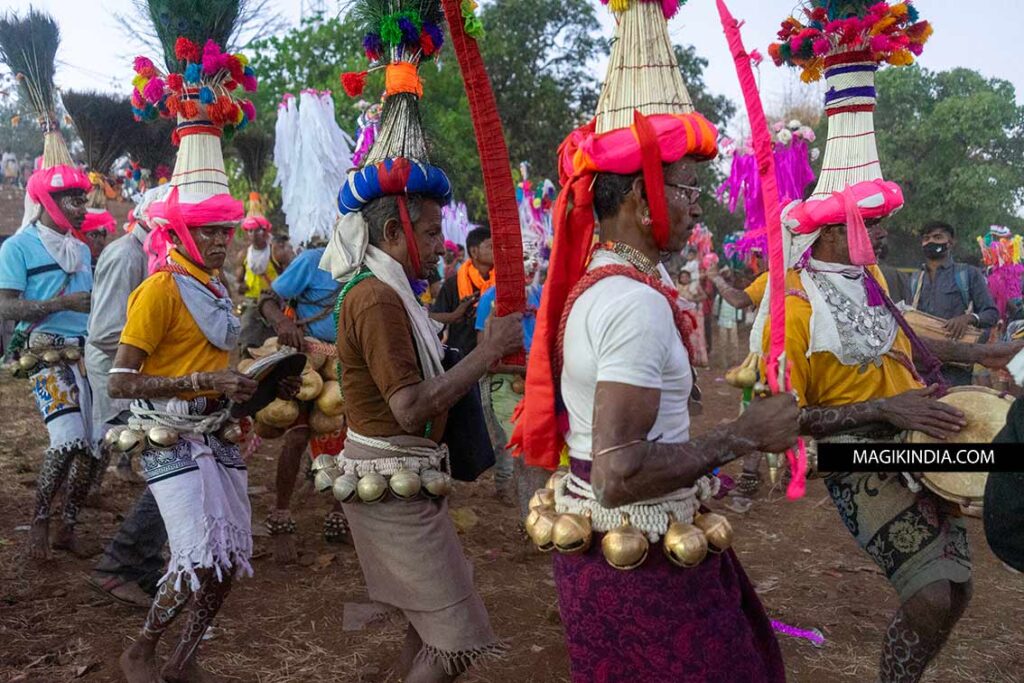
Aside from these rows of gourds, the gheriya dancers wear very tall headdresses studded with peacock feathers, pompoms, and flowers, or made of strips of tissue paper in which LED lights flicker. These can reach several meters. It’s a spectacle in itself!

For the indigenous peoples of India, Holi is primarily considered a harvest festival. It’s a time of relaxation, joy, and letting off steam after months of hard work in the fields. During the festivities, this is expressed by men dressed in saris carrying threshing baskets of wheat.
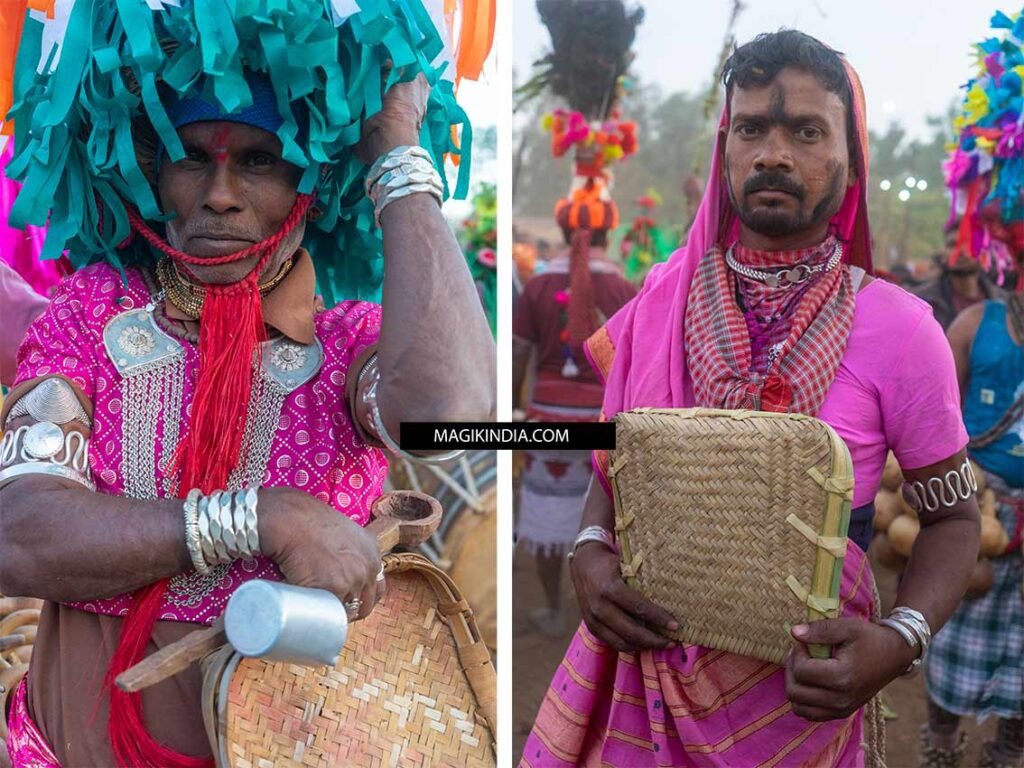
Previously, these Satpuda festivals were also an opportunity for young people to choose their life partners. However, according to my friend, this tradition seems to be falling out of favour.
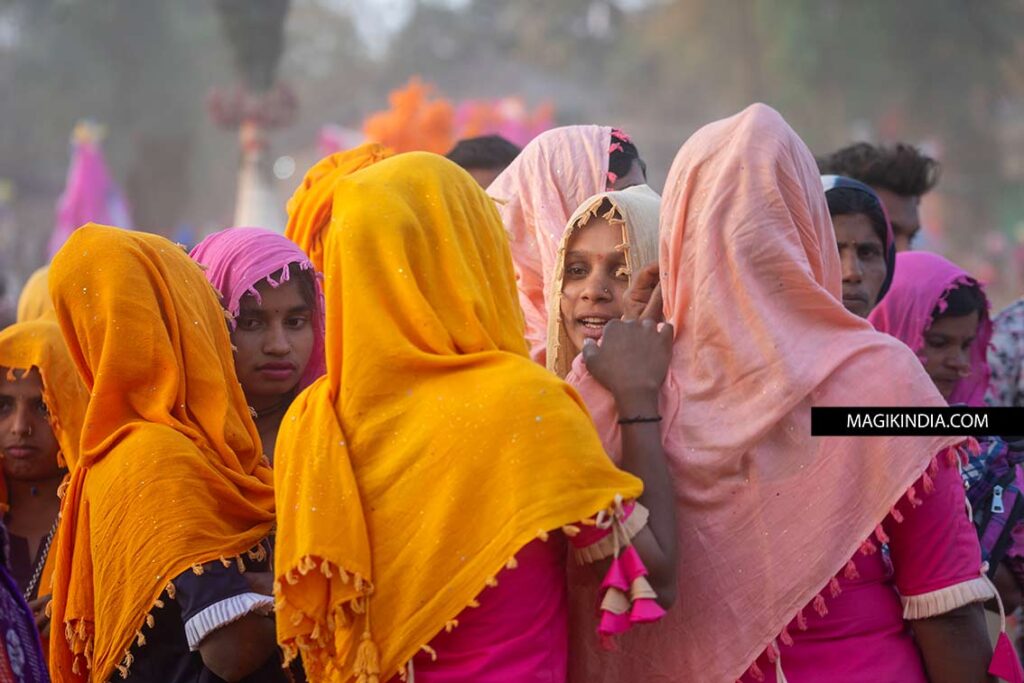
The Gheriyas stay awake all night, but they take several breaks and then set off again for another round, until early morning.
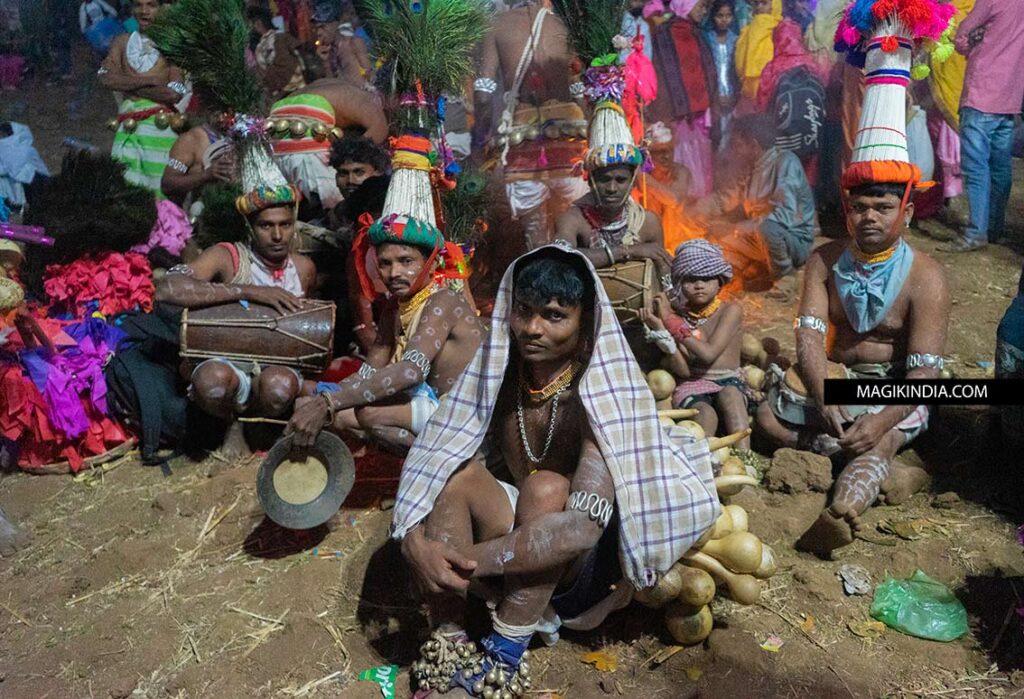
The denouement of this long night comes before dawn. Participants fill a pit with tree trunks, forming the Holi pyre (Holika Dahan). At its center is a 15-meter sacred bamboo stalk, harvested from the forest and having undergone preparatory rituals.
All the Gheriyas gather and swirl frantically around the fire; it’s best not to be in their path at that moment! The bamboo stalk, consumed by the flames, eventually falls. If its fall points east, it is a sign of a bountiful harvest for the coming season.
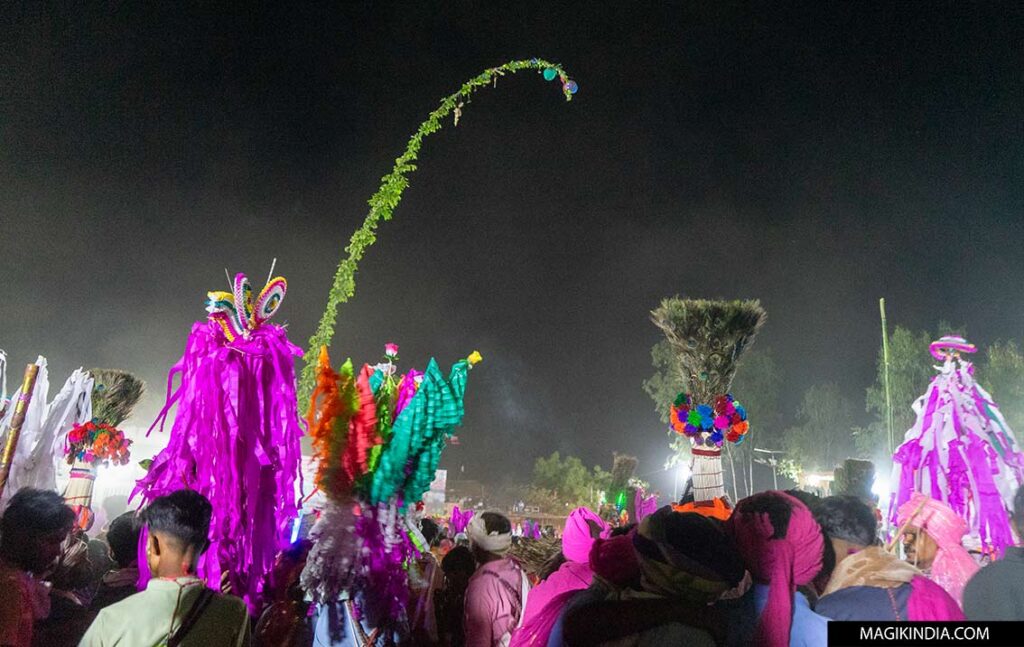
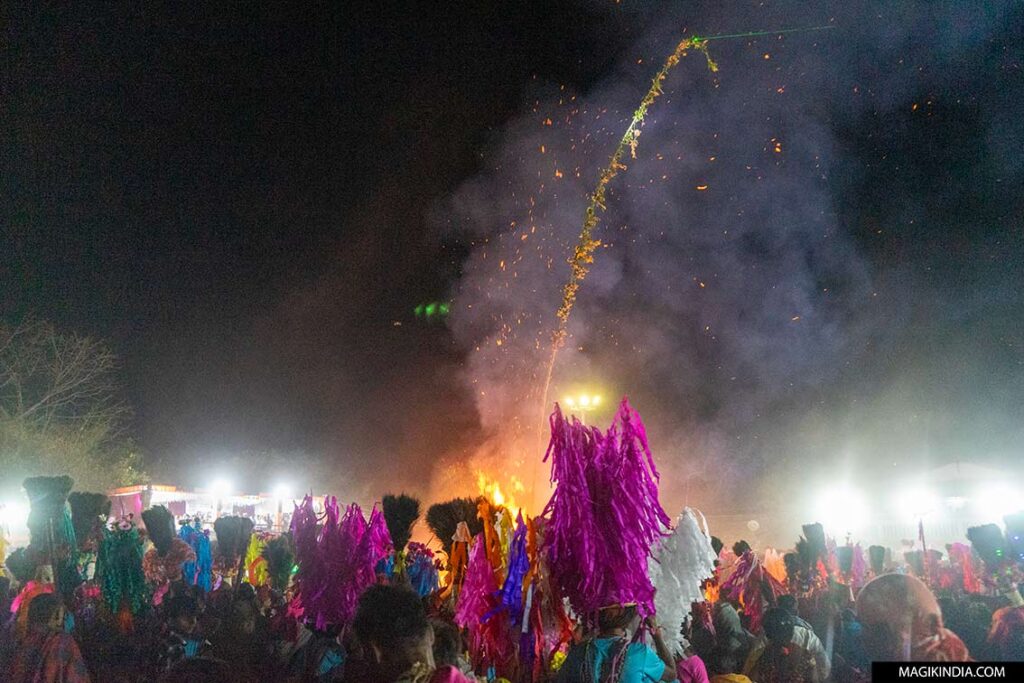
As the fire dies down, the gheriyas tear a calabash from their belts and hollow it out with their wooden swords. It will be used to collect some sacred embers. They also place a black tilak made of ash on their foreheads as a sign of blessing.

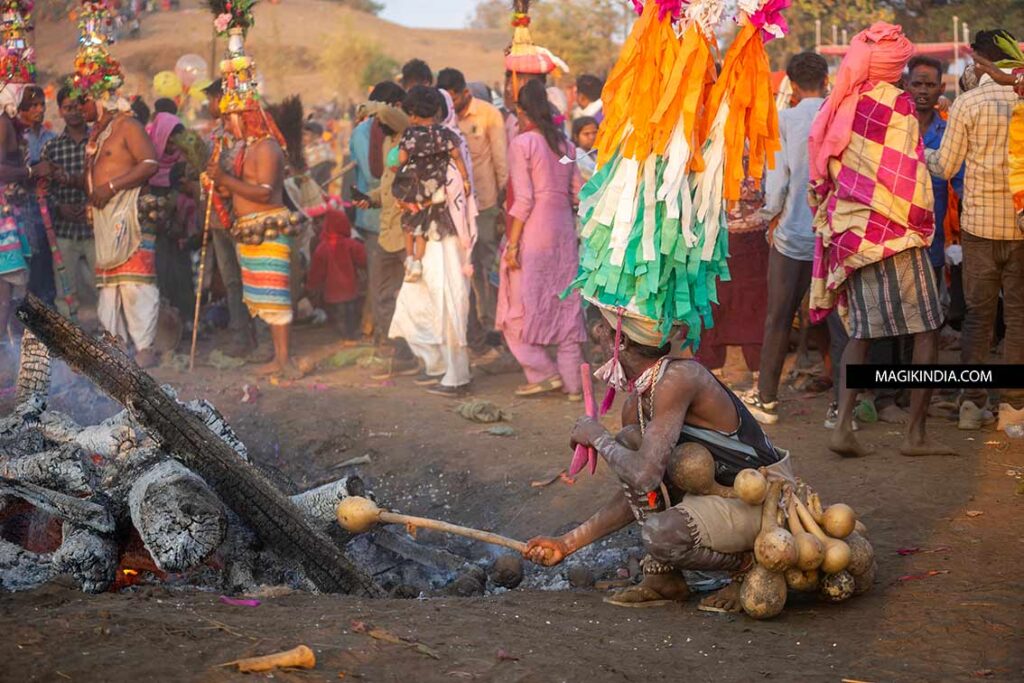
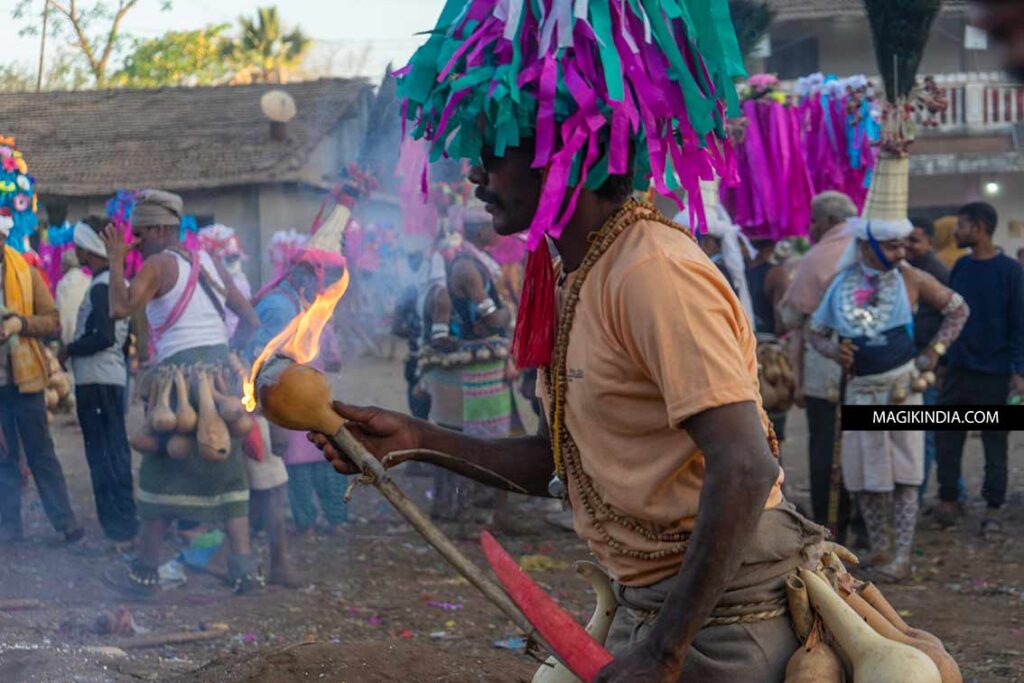

Day breaks, the faces of the troops of men are drawn, their eyes unfocused. They still readily comply with my photographic demands. It must be said that I am the only “gauri” (foreigner) on site, and my presence arouses curiosity.
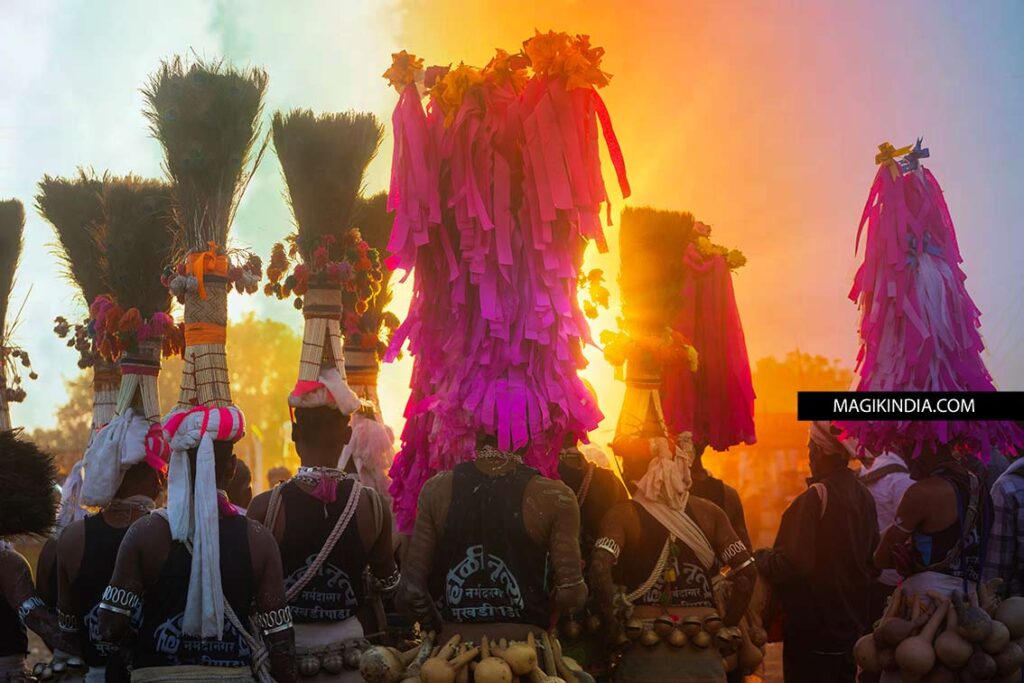
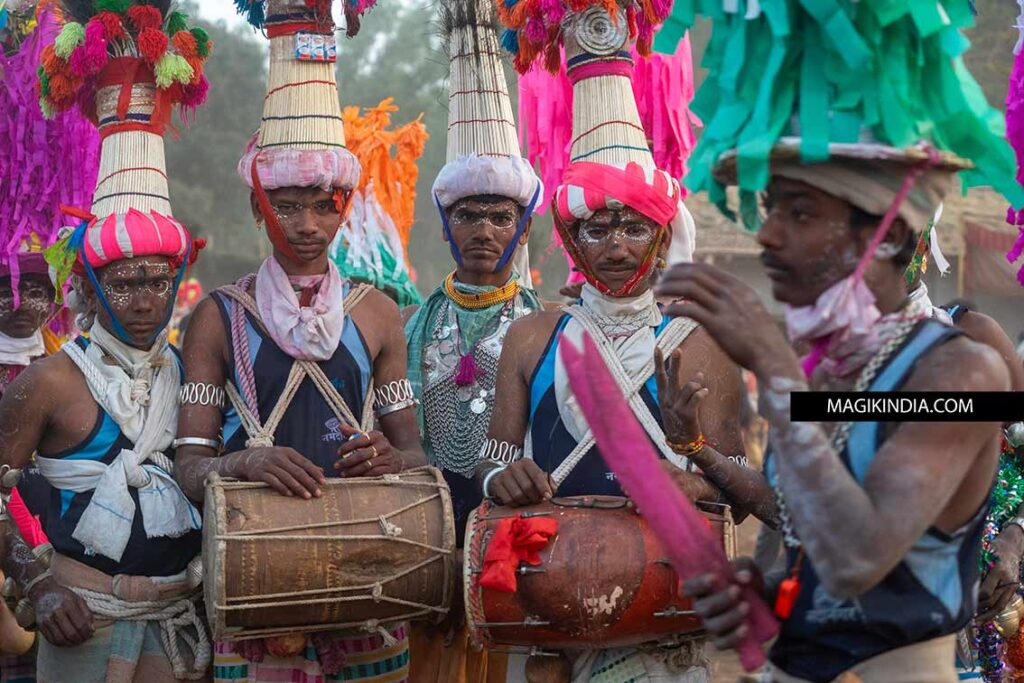
Dawn is the best time to connect with the participants, especially the ladies who, for the occasion, have donned a farandole of silver jewelry.
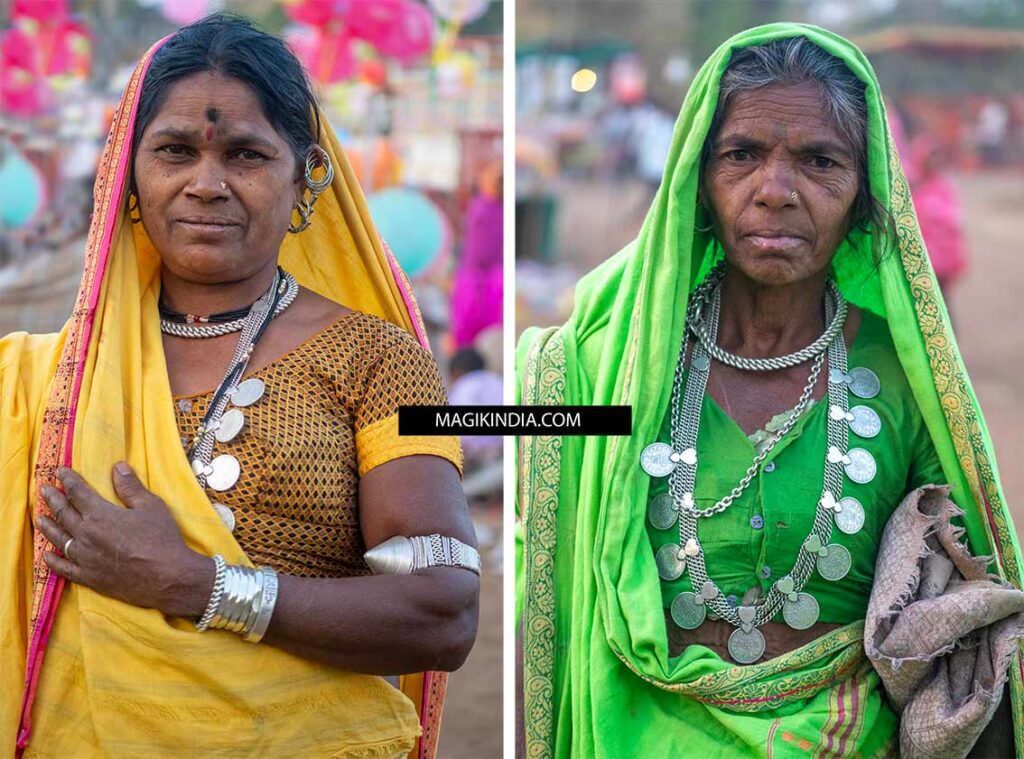
Late in the morning, the participants head home for a well-deserved rest. Some make the journey on foot, while others try to squeeze through already packed jeeps! And all of this is always accompanied by all sorts of sounds!
And for my part, well, I appreciate how lucky I was to be able to observe these timeless ceremonies which, I am sure, will remain etched in my memory forever.


